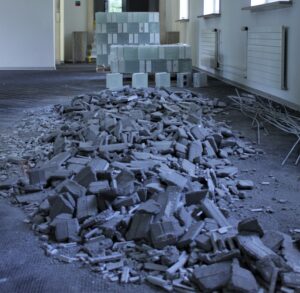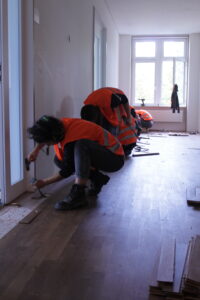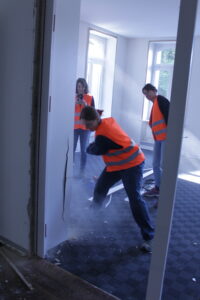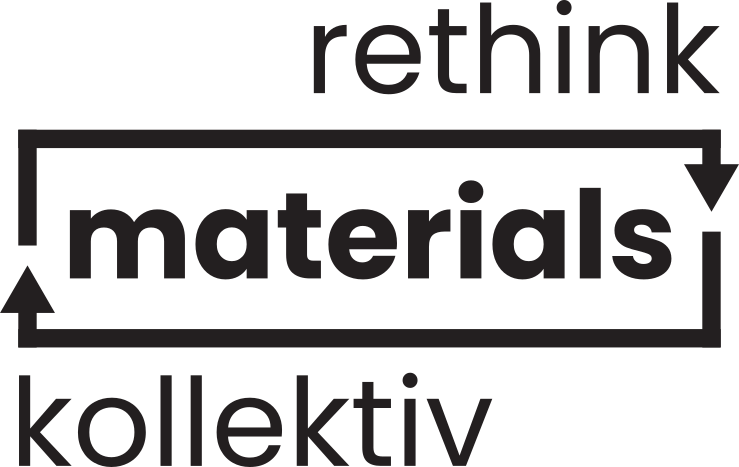Public discourse on sustainability
For many years, the public discourse on food and mobility has included concerns about future framework conditions and planetary boundaries. In the field of building, the public and professional discourse has so far been limited mainly to the use of energy - an area which today is dealt with by specialist planners such as building physicists and building technicians. For a long time, no one asked the question about the materials used to construct a building and the grey energy they contain. Yet cement production alone is responsible for 8% of global greenhouse gas emissions. The number of materials used and their complexity has increased steadily since industrialisation. Materials are used that later end up as toxic waste in landfills and waste burning plants. At the same time, the living space per person is constantly increasing. It is being built and built - and demolished.
Waste challenges in Switzerland
Buildings are responsible for around 40 percent of the energy consumption in Switzerland. While operating energy in the building sector has received a lot of attention in recent decades, the consideration of grey energy has been neglected in the discussion. There is a need for action here, since Switzerland is one of the largest waste producers in the world.
The topic of reusing building components is highly explosive in Switzerland, because two thirds of the waste produced results from the renewal of the real estate stock. According to statistics from the Federal Office for the Environment, the conversion and deconstruction of buildings produces around 17 million tonnes of material every year. Of this, two-thirds in turn is transferred to a recycling process.

Reuse of building components
In order to establish the future scenario of a competitive reuse of building components, it is necessary to bring the peculiarities and challenges of reuse closer to different target groups and to enable an exchange of knowledge. The reuse of building components can respond to future challenges in the field of construction through a resource-saving use of building materials and contribute to the renegotiation of the relationship between people and the environment.

Reuse vs. recycling
The reuse of building components in the construction industry has several advantages over recycling. The benefits are closely linked to the various aspects of sustainability. Reuse has the ecological potential to reduce waste, raw material extraction, grey energy and CO2 emissions. Furthermore, it also creates a social and economic added value through the demand for local jobs, it preserves cultural practices such as craftsmanship and the associated know-how. Finally, the building component itself is preserved and can be reinstalled as a new door, window or façade.
Challenges in the reuse of components
Despite these advantages, there are a number of challenges in establishing reuse as a daily practice in construction. Besides the difficulty of meeting technical standards, logistical problems caused by differences between the demand for components and the available supply are an obstacle. Furthermore, additional costs are incurred due to dismantling, adjustments and storage. Also not to be neglected are the established construction process, which is supported by all parties involved, and a still too small number of realised projects based on reuse.

There is a great discrepancy between our everyday professional life and the need to live (and build) within planetary boundaries. For each of members of our collective, the personal urgency and desire has grown not to continue to build in this way. On the contrary, we aim to find solutions for the architecture of tomorrow.



